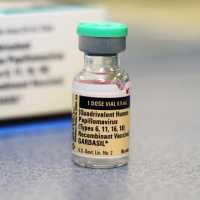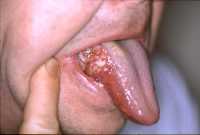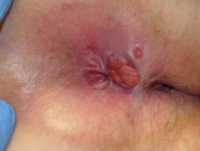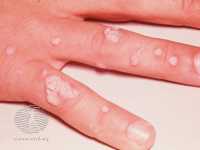HPV 16-18 During Pregnancy Linked to Preterm Birth
 Helen Trottier Ph.D
Assistant Professor, Department of Social and Preventive Medicine,
Researcher, CHU Sainte-Justine Research Center
Université de Montréal
Montréal, Québec, Canada
MedicalResearch.com: What is the background for this study?
Response: We know that HPV infection can have serious consequences such as the development of cancerous lesions in the cervix. HPV infection is also very prevalent in young women of childbearing age but the possible consequences of HPV in pregnancy have been poorly studied. Some population registers around the world have shown a reduction in the risk of preterm birth with HPV mass vaccination, but we must be careful with this kind of ecological correlation.
We have set up a large cohort study in pregnant women to study the association between HPV in pregnancy and preterm birth by targeting certain HPV genotypes and the duration of the infection.
(more…)
Helen Trottier Ph.D
Assistant Professor, Department of Social and Preventive Medicine,
Researcher, CHU Sainte-Justine Research Center
Université de Montréal
Montréal, Québec, Canada
MedicalResearch.com: What is the background for this study?
Response: We know that HPV infection can have serious consequences such as the development of cancerous lesions in the cervix. HPV infection is also very prevalent in young women of childbearing age but the possible consequences of HPV in pregnancy have been poorly studied. Some population registers around the world have shown a reduction in the risk of preterm birth with HPV mass vaccination, but we must be careful with this kind of ecological correlation.
We have set up a large cohort study in pregnant women to study the association between HPV in pregnancy and preterm birth by targeting certain HPV genotypes and the duration of the infection.
(more…)HPV Vaccination Will Gradually Prevent Many Oropharynx Cancers
HPV Oropharyngeal Cancer: Reduced Dose ChemoRadiation Linked to Better 5 Year Quality of Life
Men Less Likely to Complete HPV Vaccination Series
Aggressive Oral Tongue Squamous Cell Carcinoma in Young, Non-Smokers and Non-Drinkers
HPV Vaccination Associated With Marked Reduction in Invasive Cervical Cancer
Anal Cancer Rates Rise Sharply
Mailed HPV Kits Improved Cervical Cancer Screening


Most Americans Unaware that HPV Causes Oral and Genital Cancers
Cervical Cancer: New HPV RNA-Seq Test Diagnoses Riskiest Forms of HPV Infection
Does the HPV Vaccine Come With a Moral Hazard?


A Painless Heat Patch May Help Resolve Warts
HPV6 Serology Associated with Bladder Cancer
Lack of HPV Vaccination in Young Minority Men Is Not a Matter of Access
Massive Reduction in Cervical Cancer Among Vaccinated Young Women
Therapeutic HPV Vaccine Can Trigger Resolution of Virus and Cervical Cancer in Some CIN Patients
HPV Vaccination Rates Low Among Adults at High-Risk for HIV Infection
HPV Testing for Primary Cervical Cancer Screening
Self Sampling for Cervical HPV: Useful Screening Tool
Why Aren’t More Teens Vaccinated Against Cancer Causing HPV?
Dual Stain More Accurate & Efficient for Detecting Cervical Precancers in HPV-Positive Women
- Infection with high-risk human papillomavirus (hrHPV) is the primary cause of cervical cancer. While hrHPV infection is common, most infections are benign and clear on their own without causing cervical cancer. However, some women develop persistent hrHPV infections and are at risk for cervical cancer and its precursors (i.e., precancer).
- The United States Preventative Services Task Force recommends screening every 3 years with cervical cytology (i.e. Pap) alone, every 5 years with hrHPV testing alone, or with a combination of hrHPV testing and cytology (co-testing) for women aged 30 to 65 years.
- Screening with hrHPV testing is highly sensitive for detecting cervical precancer but requires additional triage tests to identify HPV-positive women at high-risk of developing cancer who should undergo colposcopy (visualization of the cervix) and biopsy from those at low-risk who can be safely monitored.
- Currently, Pap cytology is recommended as a triage test for women testing HPV-positive, but this approach requires frequent re-testing at short intervals because the risk of cervical precancer is not low enough in HPV-positive women who test cytology negative to provide long-term reassurance against future risk. In most settings, women who test HPV-positive, cytology-negative are referred to repeat screening within one year.
- The p16/Ki-67 dual stain assay is a molecular test that measures two specific proteins, p16 that is strongly linked with hrHPV infection, and Ki-67, a marker of cell proliferation that is common in precancers and cancers.
- Studies have shown that the dual stain test has greater accuracy for detecting cervical precancers in HPV-positive women compared with cytology.
- In order to determine the optimal screening intervals for the dual stain test, long-term prospective studies are needed to determine how long HPV-positive women who test dual stain negative can be safely reassured of a low precancer risk.
Strong Link Between HPV and HIV Infection in MSM
Study Identifies Viral Protein That Allows HPV-Associated Head/Neck Cancers to Spread
Can the HPV Vaccine Be Used To Treat Some Skin Cancers?
HPV Testing or PAP Smear To Screen for Cervical Cancer?
MedicalResearch.com Interview with: [caption id="attachment_44050" align="alignleft" width="150"] Dr. Melnikow[/caption] Joy Melnikow, MD, MPH Professor, Department of Family and Community Medicine Director, Center for Healthcare...
Head and Neck Cancer Survivors at Risk of Secondary Cancers, esp if They Smoke
HPV Testing Detects Cervical Pre-Cancer Earlier Than PAP Tests
Potentially Cancerous Genital Lesions Common in Transplant Population
MedicalResearch.com Interview with:
Dr. Christina Lee Chung, MD Associate Professor Department of Dermatology Drexel University
MedicalResearch.com: What is the background for this study? What are the main findings?
Response: In early 2016, five years after the inception of our specialty medical-surgical transplant dermatology center, we realized our nonwhite transplant patients were developing skin cancer at higher rates and found interesting trends. These data were published in a previous manuscript. One of the more striking findings was that these patients were developing a high proportion of skin cancer in non-sun-exposed areas such as the genital region. There are no standard guidelines regarding genital skin evaluation and it is unclear how often it is performed in any capacity amongst dermatologists, including practitioners in our center, quite frankly. Our group was concerned that we could be missing skin cancers in this “hidden” area in our high-risk organ transplant population so we launched a quality improvement initiative that incorporated thorough genital skin evaluation as a standard part of post-transplant skin cancer screening.
Fifteen months after we started this modified screening process, we decided to evaluate the results. To account for any variation in examination, we looked at the findings of a single practitioner. We found that genital lesions are common in the transplant population and include high rates of genital warts and skin cancer. However, patient awareness of the presence of genital lesions was alarmingly low. Nonwhite transplant patients, Black transplant recipients in particular, were disproportionately affected by both genital warts and genital skin cancer in our cohort. Similar to cervical cancer, high-risk HPV types were closely associated with genital squamous cell carcinoma development in our transplant population. (more…)

























